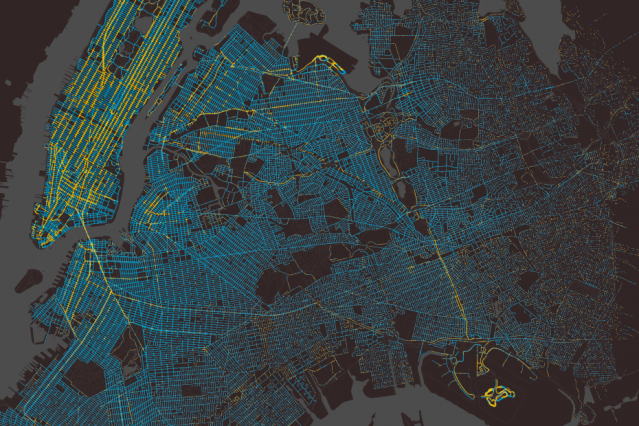The Senseable City Lab and the transportation company Uber are launching a research initiative to explore how car- and ride-sharing networks could reshape the future of urban mobility. This initiative will explore new mobility paradigms for the 21st century, building on both parties’ data and analytics strengths.
“We all know how the ‘sharing economy’ has revolutionized many aspects of our lives. How will it challenge traditional notions of mobility and individual freedom after the advent of self-driving?” asks Carlo Ratti, professor of the practice of urban technologies and director of the Senseable City Lab. “In the United States, cars are idle 95 percent of the time, so they are an ideal candidate for the sharing economy.”
“We recognize sharing as the critical element in enabling on-demand mobility systems to deliver benefits to riders, drivers, and cities,” said Andrew Salzberg, Uber’s head of transportation policy and research. “It’s why we’ve invested so much into building uberPOOL into a successful product in over 30 cities around the world, and it’s why we’re partnering with Senseable City Lab to push the boundaries of what’s possible.” The Senseable City Lab has been pioneering research in ride sharing since its successful HubCab project in 2014.
With self-driving cars taking to the road, sharing could potentially increase significantly. A shared self-driving car could give you a lift to work in the morning and then, rather than sitting idle in a parking lot, provide a ride to someone else in your family — or to someone else in the neighborhood. According to MIT’s research, this could theoretically lead to a city where everyone could travel on demand with just one-fifth of the number of cars in use today. Analysis of the data collected by Uber through its global operations will produce better estimates of the impact of car and ride sharing around the world.
This collaboration will study mobility and the ability to share rides on a global scale. The comparative analysis of data collected in various cities will enable the exploration of impactful questions for the first time, such as: What is the effect of a city’s size on shareability? Is it easier to share a trip in a large city or small city? Do social, economic, and cultural aspects influence mobility patterns and thus sharing potential?
Understanding the patterns that facilitate or prevent the sharing of vehicles and trips is critical to understanding the path toward more energy-efficient, environmentally friendly, and equitable urban form — a goal that MIT and Uber share.
Paolo Santi, visiting scientist, will direct the project on MIT’s side. Team members will include Mohammad Vazifeh, Giovanni Resta, and Thomas Matarazzo.

Shares
What’s your reaction?
Shares
admin















Leave a Reply